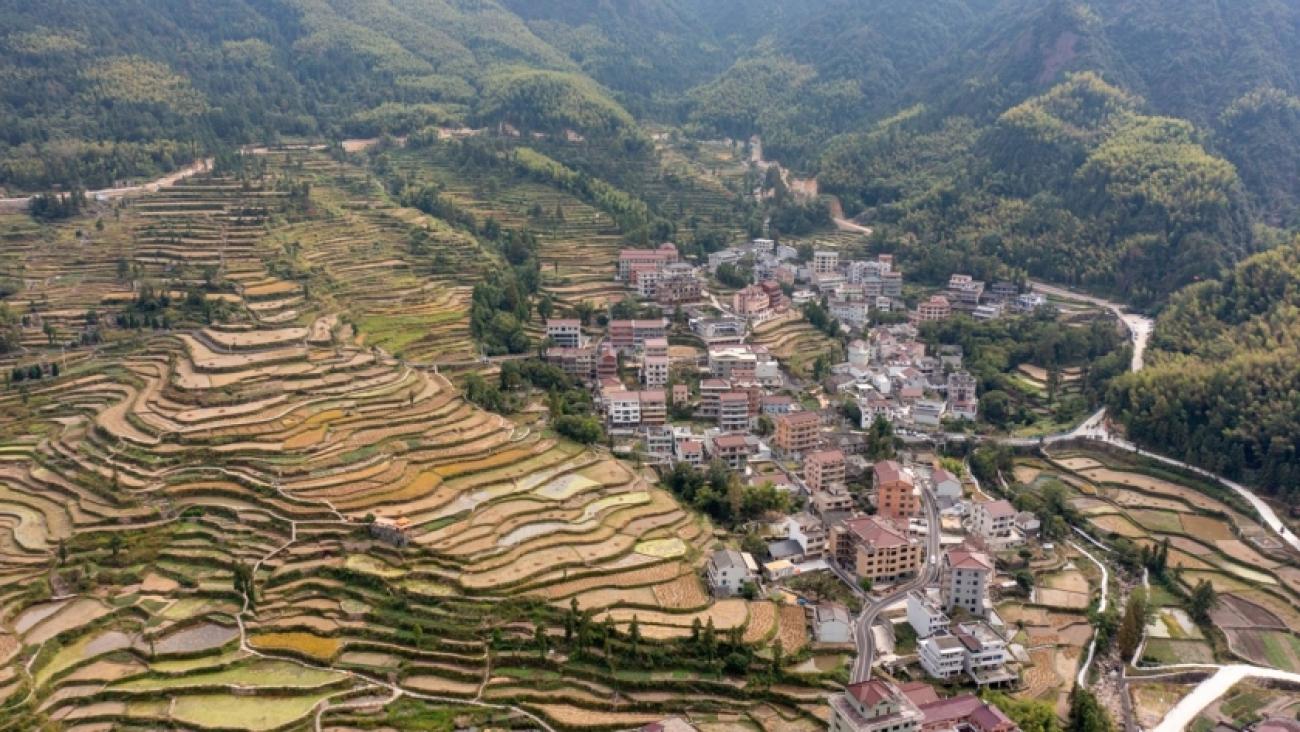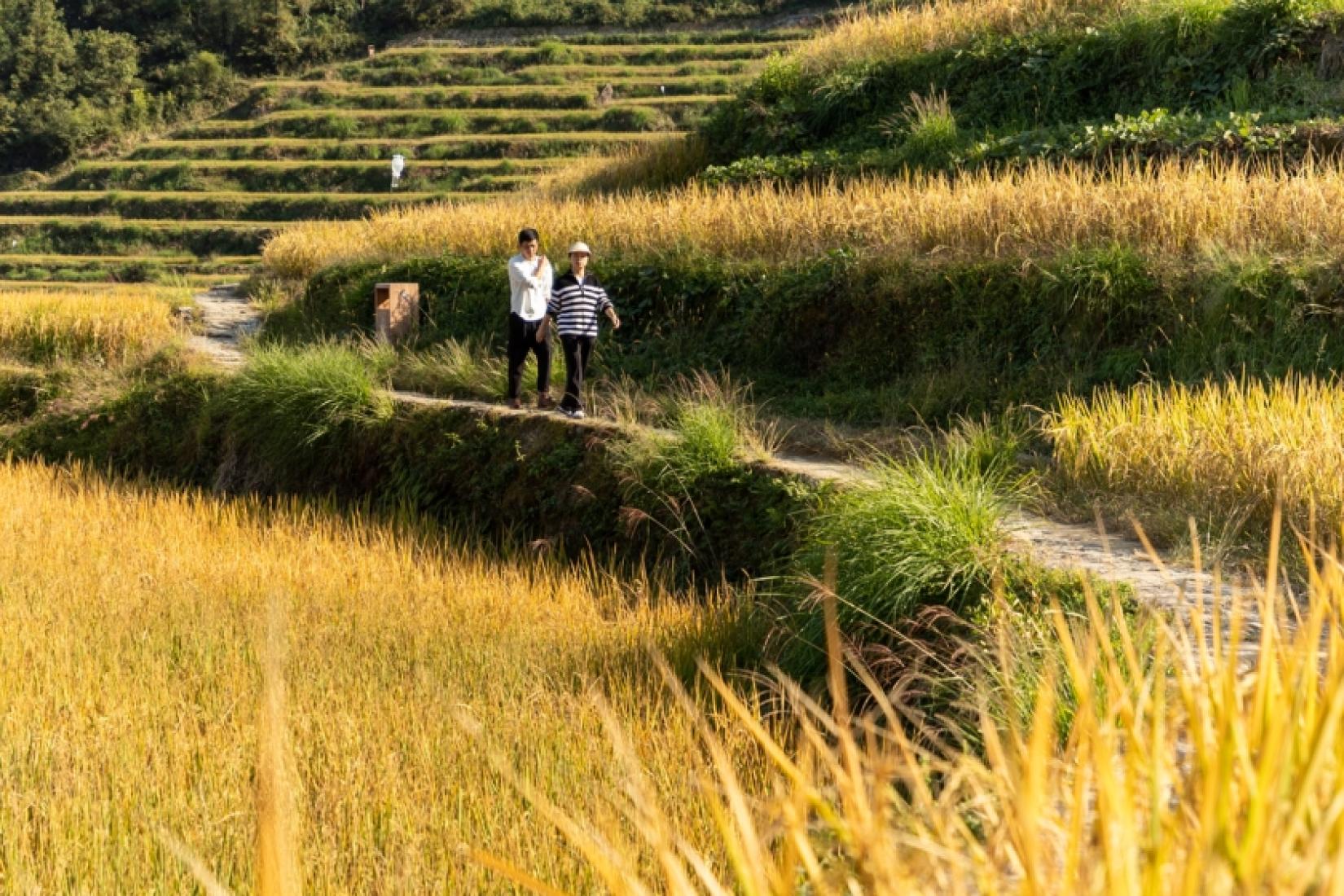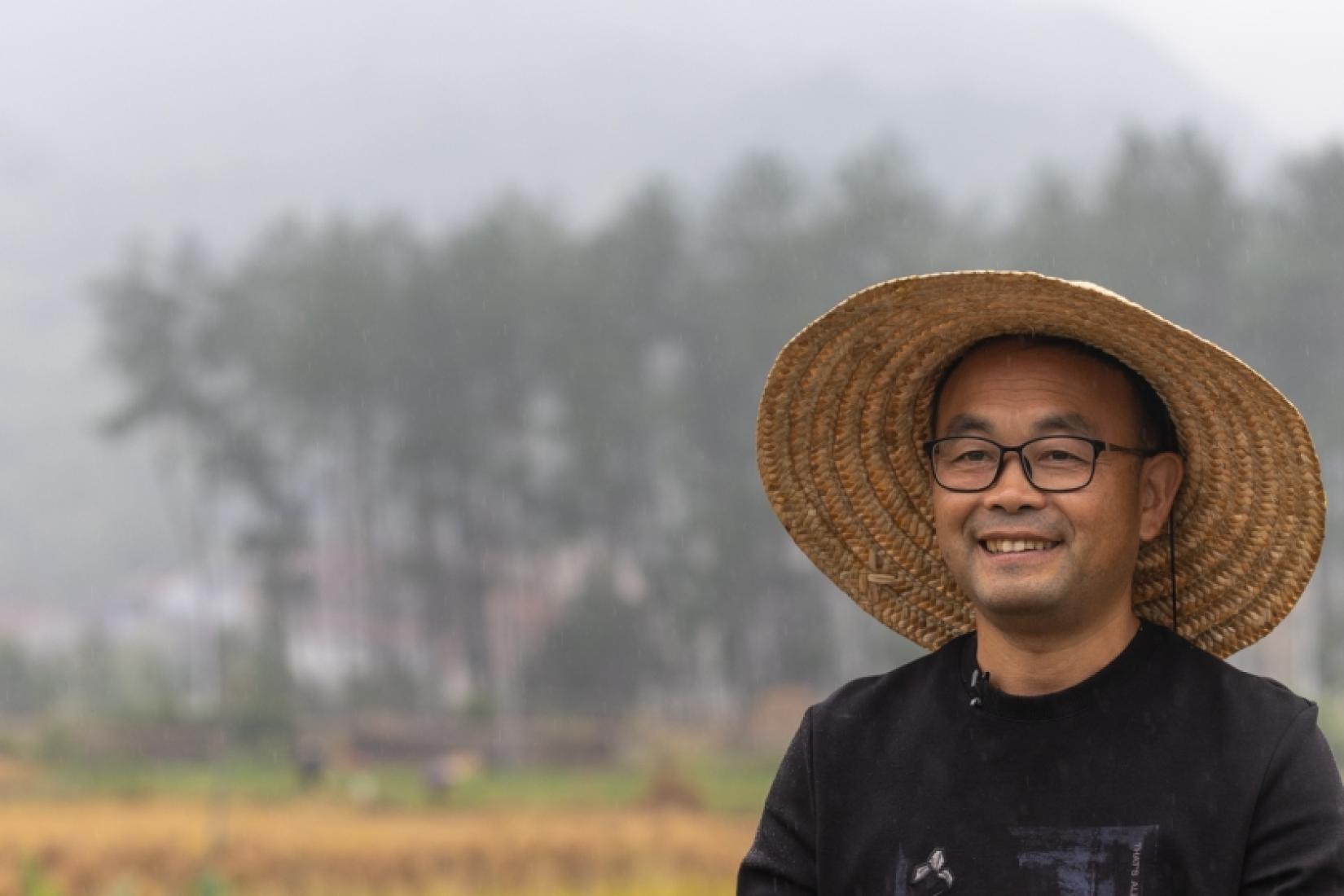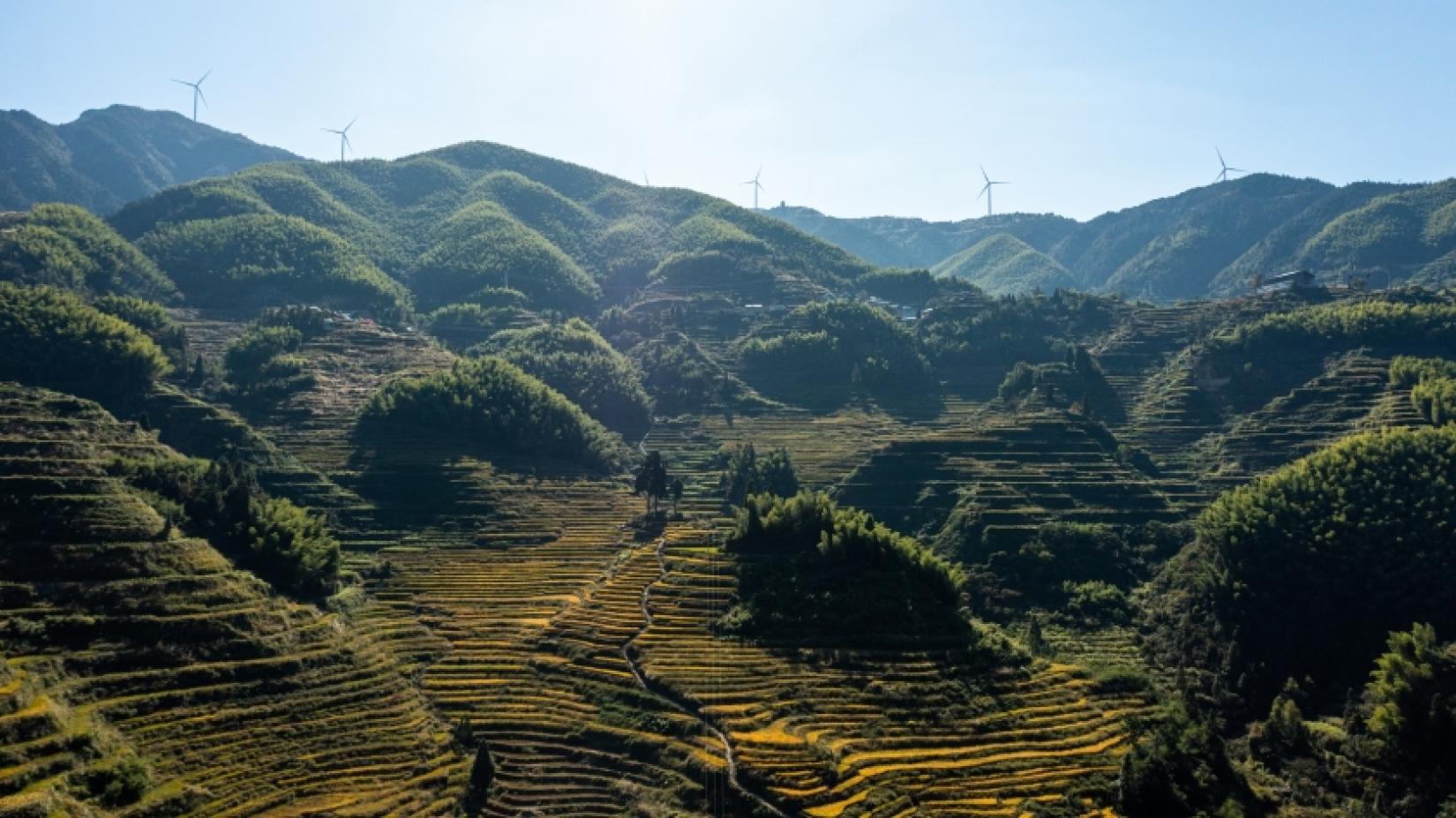Science and tradition drive China-wide effort to restore landscapes

A story from UNEP
Ahead of Global Tourism Resilience Day on 17 February, which promotes sustainable tourism for poverty eradication and environmental protection, we take a look at a large-scale, award-winning initiative in China to restore ecosystems from mountains to coastal estuaries across the country.
Armed with billhooks, hammers and their bare hands, villagers in China's eastern Yunhe County are methodically clearing a series of abandoned hillside rice fields, many perched dramatically over a yawning valley.
These terraced paddies had long ago fell into disuse, a product of a strained rural economy. But villagers are aiming to make the land productive again by weeding out invasive plants and building walls to prevent soil erosion.
The work, which has been combined with a return to Earth-friendly traditional farming practices, is reviving Yunhe’s stunning hillside farms. And at the same time, it is attracting nature-hungry visitors, making the county a budding eco-tourism destination.
“With the restoration of the terraces and the development of tourism and homestays in recent years, some young people who left the village have returned,” says Wu Xiaofang, who runs a homestay with her husband. “The popularity of this place is growing.”
The transformation in Yunhe, high in the eastern province of Zhejiang, is supported by the Shan-Shui initiative, a hugely ambitious drive led by the Chinese government to restore ecosystems, from mountains to coastal estuaries, across the world’s most populous nation.
The United Nations Decade on Ecosystem Restoration has named the initiative, which comprises 75 large-scale projects, among its first 10 Global Restoration Flagships, an award designed to inspire and encourage restoration around the world.
The award underscores the key role China plays in addressing the triple planetary crisis of climate change, biodiversity and nature loss, and pollution and waste. In December, China and Canada rallied nations behind a new global agreement, the Kunming-Montreal Global Biodiversity Framework, to halt and reverse the destruction of nature. The accord included a massively scaled-up restoration effort.
An integrated approach
Launched in 2016, the initiative takes a systematic approach to restoration. Projects dovetail with national land use plans, work at the landscape or watershed scale, including agricultural and urban areas as well as natural ecosystems, and seek to boost rural economies.
By enhancing ecosystems and the benefits they deliver, the projects promote the implementation of the UN Sustainable Development Goals, including those on poverty eradication, climate change and biodiversity.

So far, 3.5 million hectares have been brought under restoration under the initiative, out of a 2030 target of restoring 12 million hectares. In all, the initiative is expected to create more than 3.2 million jobs and deliver benefits to some 360 million people. Critically endangered species that are benefitting include the Chinese sturgeon, birds like Baer’s pochard, and the Baishanzu fir, the world’s rarest conifer.
Tradition meets science
Several of the projects integrate scientific knowledge with traditional farming methods to make land use more sustainable.
About 100 km east of Yunhe, Xu Guanhong does not let pouring rain dampen his enthusiasm for how the fish swimming in his rice paddies mean that he does not need to treat his crop with either pesticides or artificial fertilizers.
Xu, a former schoolteacher, says he took over some idle land near the town of Qingtian several years ago and began experimenting with organic farming methods. Local farmers were sceptical, and Xu’s yields were unreliable in the first two seasons. But now he is seeing results that have caught the interest of his neighbours.
“Our ancestors were smart. They put fish in the rice paddies and let them eat pests and weeds,” Xu told a visiting United Nations Environment Programme (UNEP) film crew, raindrops bouncing off his wide straw hat. “The faeces excreted by the fish provide nutrients for the rice. In my field, an ecological cycle is now underway without any fertilizer or pesticide.”

Liu Zhumei, a local farmer, says she has been adopting Xu’s methods, which also include monitoring water quality in rice paddies and installing equipment to maintain the level of dissolved oxygen.
“We didn't earn much before. But now, following these methods, we can earn as much as 60,700 yuan per acre,” Liu says. (10,000 Chinese yuan is about US$1,450.) “Consumers from other provinces also know that our fish here are pollution-free, so they sell very well.”
Restoring harmony
The Shan-Shui initiative is named after a traditional Chinese landscape painting style that depicts the harmony of land and water – a balance that human activities, including industry and agriculture, have often disturbed.

Luo Ming, a restoration expert at the Land Consolidation and Rehabilitation Centre of China’s Ministry of Natural Resources, says people should again recognize that they form a “community of life” with nature, and depend on it for their well-being.
“This traditional wisdom has existed for thousands of years,” Luo says. “Such a system is not only good for the environment but also greatly increases the benefits for local people. It attracts people who love the way of life in which people and nature live in symbiosis, making it a sustainable model.”
About the UN Decade on Ecosystem Restoration
The UN General Assembly has declared the years 2021 through 2030 the UN Decade on Ecosystem Restoration. Led by UNEP and the Food and Agriculture Organization of the UN together with the support of partners, it is designed to prevent, halt, and reverse the loss and degradation of ecosystems worldwide. It aims at reviving billions of hectares, covering terrestrial as well as aquatic ecosystems. A global call to action, the UN Decade draws together political support, scientific research and financial muscle to massively scale up restoration.
This story was originally published by UNEP



